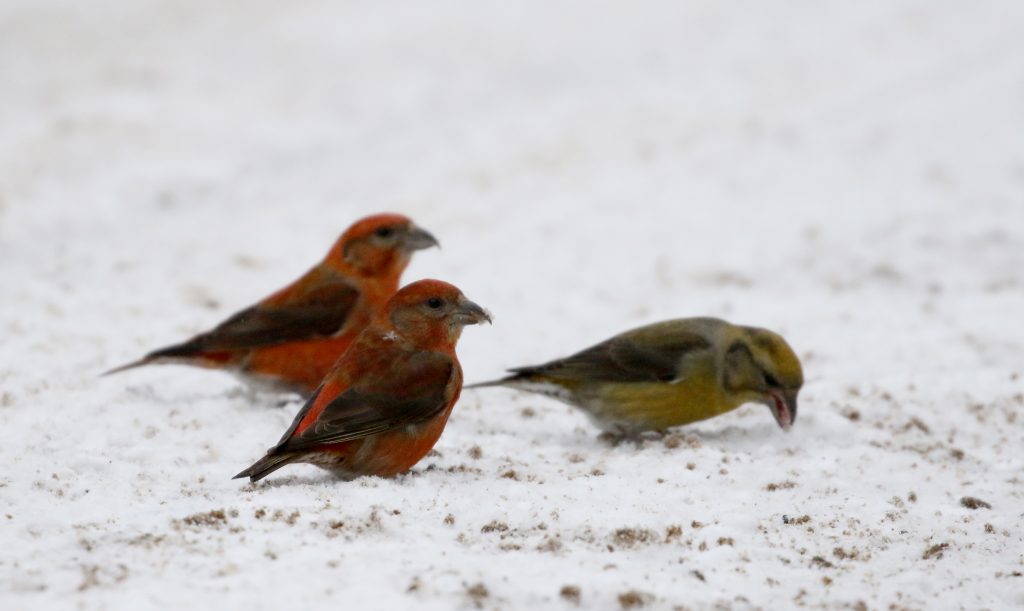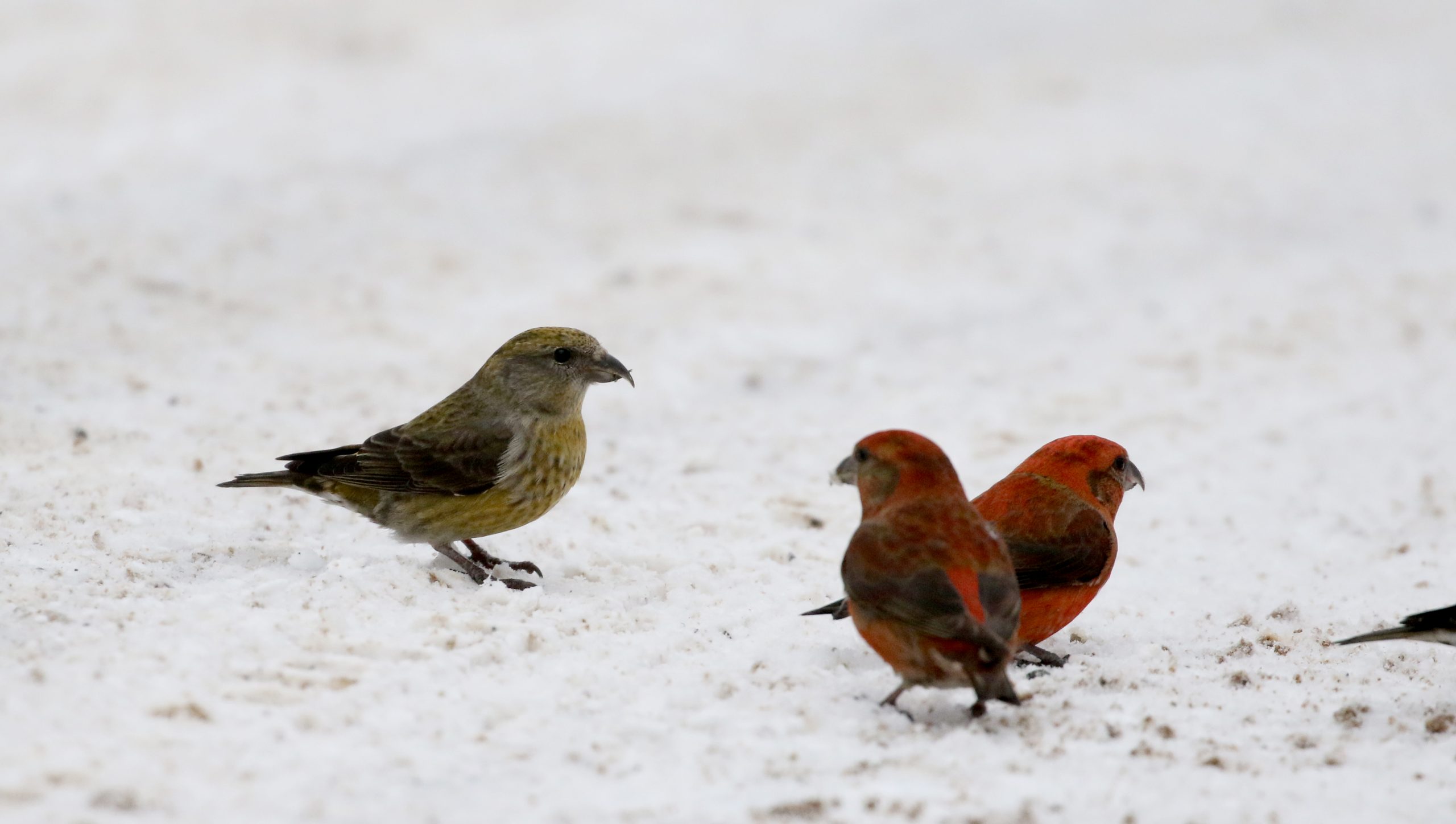Authors Tim Spahr and Matthew A. Young,
DOCUMENTING AND RECORDING CROSSBILL CALLS:
Macaulay Library has recently passed 10,000 red crossbill recordings (10,500+ actually) making it the most common (= highest number of recordings in collection) species in the collection by almost 50%, and that is a big thanks to all of you! We encourage anyone encountering crossbills to attempt audio recordings. Recordings from those with professional grade recording equipment are always best, but even smartphones can adequately document the call types. It is always better to download a sound recording app that makes .WAV files, which prevent loss of important audio information. However, even using the “voice memo” feature can get a decent recording that can help to type the crossbill. For example, on an iPhone just open your audio recording app, hit record, hold your phone as steadily as possible with the speaker facing the crossbill, and then email the recording for analysis along with a link to your eBird checklist! External microphones can be purchased that improve the recording quality even more; check out recommendations from the Macaulay Library.
If you record a Red Crossbill, please enter it as “Red Crossbill” in eBird, upload the recording to your checklist, and send the link to the checklist to Matt, Tim or Patrick (see below) for assistance with identification to specific call type. If identification to Type can be confirmed via the recording, you can easily use the new “Change Species” feature to search for the correct crossbill type and revise the identification. If you try to identify the type yourself, do not worry if you misidentify the proper call type; one of us will contact you after listening to your recording. Keep in mind many crossbills can be typed from very poor recordings, so don’t be afraid to submit low-quality media, as these often turn into high-value data……..but recordngs with professional gear are always best.
Red Crossbills moved in numbers this year and more about that can be read here. The Red Crossbill will also be one of the main species groups The Finch Research Network is studying along with the Evening Grosbeak and the Rosy Finch complex. Purpose is to provide a stable, long-term home for Crossbill research over a broad front: field observations, recordings, assortative mating and call type delineation by sound and range. Provide information to the scientific community on the validity of call types and potential full-species separations for flight call types, geographically isolated populations (old world versus new world) etc. One purpose will continue to serve as arbiters of flight call determination via audiospectrographic analysis and machine learning/AI for this worldwide complex.

Whether it’s through loving birds and getting in the field to watch our feathered friends, the easiest and best way to be a part of this collaborative network is that whenever you’re the field and you hear crossbills, especially if you’re in Canada or somewhere across the Western Palearctic where recordings are scarce, is please grab a recording, whether with professional gear or phone, and upload it to Xeno Canto, BirdNet or Macaulay Library!
Over the coming months and years we plan to fundraise for this project, and any support received will be greatly appreciated! We plan to fund student research projects. And lastly, we implemented an ARU component of The Crossbill Project this past summer, and if you’re interested in helping in the future, please contact us as well.
Get in touch:
If you would like to know more about or want to contribute to this project, please get in touch with Matt or Patrick or Tim .
Photo Credits Jay McGowan
FiRN is a nonprofit, and has been granted 501c3 status. FiRN is committed to researching and protecting these birds and other threatened finch species like the Evening Grosbeak and Rosy-finches, and if you have been enjoying all the blogs and identifying of Red Crossbill call types, redpoll subspecies and green morph Pine Siskins FiRN has helped with, please think about supporting our efforts and making a small donation at the donate link below.
For more on the Red Crossbill, read below:

